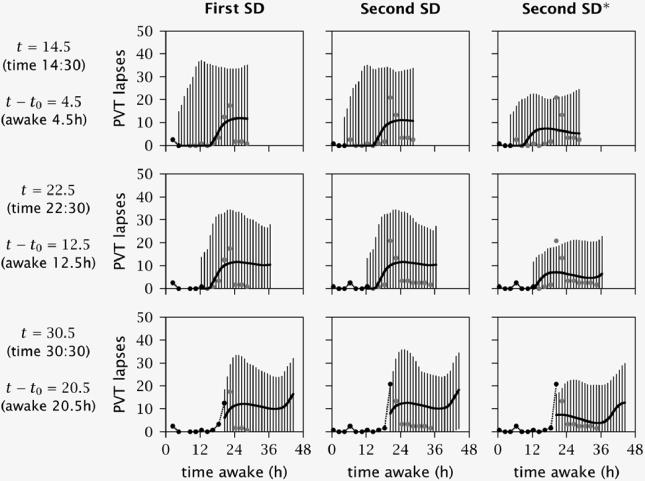Figure 7.
Simulation using the Bayesian forecasting procedure to predict performance over time for a single individual exposed to acute total sleep deprivation twice. The first column of panels shows the simulation for the first time the individual underwent 36 h sleep deprivation; graphical details are the same as for Figure 2. (Note that the 24 h ahead predictions displayed in the bottom panel extend beyond the 36 h period of sleep deprivation.) The second column of panels shows the simulation for the second time the individual was exposed to 36 h sleep deprivation, retaining no information from the first exposure. The third column of panels shows the simulation for the second exposure to sleep deprivation again, but—as denoted by the asterisk—the estimates for the trait parameters at the end of the first exposure to 36 h sleep deprivation were used as prior information this time (although the initial state parameters were still considered a priori uncertain).

